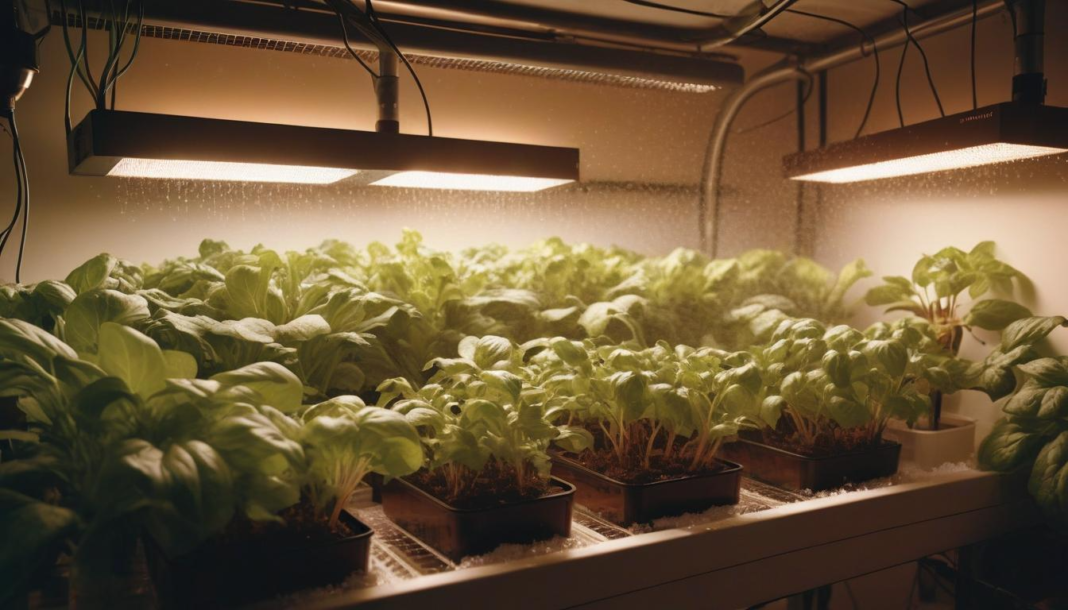Step-by-Step Guide to Building a Hydroponic System at Home – Easy & Affordable
Introduction
Imagine growing fresh, vibrant vegetables and herbs right in your living room, without the mess of soil or the need for a backyard. Sounds like a dream? With hydroponics, it’s entirely possible! Hydroponic gardening is a soil-free method of growing plants that uses nutrient-rich water to deliver everything your plants need to thrive. Whether you’re a seasoned gardener or a complete beginner, this step-by-step guide will walk you through building an easy and affordable hydroponic system at home. Let’s dive in and unlock the secrets to growing lush, healthy plants indoors!
Why Choose Hydroponics?
Hydroponics is a game-changer for indoor gardening. It’s efficient, space-saving, and environmentally friendly. Plants grow faster in hydroponic systems because they have direct access to nutrients and oxygen. Plus, you can say goodbye to weeds and soil-borne pests! Whether you live in a small apartment or a spacious home, hydroponics is a versatile solution for growing fresh produce year-round.
Step 1: Gather Your Materials
Before you start, you’ll need a few basic supplies. The good news is that most of these items are affordable and easy to find:
- Container: A plastic storage bin, bucket, or even a large mason jar will work.
- Growing Medium: Instead of soil, use materials like perlite, coconut coir, or clay pellets.
- Nutrient Solution: Purchase a hydroponic-specific nutrient mix from your local garden store or online.
- Air Pump and Air Stone: These help oxygenate the water, ensuring your plants’ roots stay healthy.
- Net Pots: Small pots with holes to hold your plants and growing medium.
- Light Source: If you don’t have access to natural sunlight, invest in LED grow lights.
- pH Testing Kit: To monitor and adjust the pH level of your water.
Step 2: Choose the Right Plants
Not all plants are created equal when it comes to hydroponics. Some thrive better than others in a soil-free environment. Here are a few beginner-friendly options:
- Herbs: Basil, mint, cilantro, and parsley grow exceptionally well in hydroponic systems.
- Leafy Greens: Lettuce, spinach, and kale are fast-growing and low-maintenance.
- Vegetables: Cherry tomatoes, peppers, and cucumbers can also be grown hydroponically with a bit more care.
For your first hydroponic system, start with herbs or leafy greens. They’re forgiving and don’t require as much attention as fruiting plants.
Step 3: Set Up Your Hydroponic System
Now that you have your materials and plants, it’s time to assemble your system. Follow these steps:
- Prepare the Container: Drill holes in the lid of your container to hold the net pots. Ensure the holes are spaced evenly to allow room for plant growth.
- Add the Growing Medium: Fill the net pots with your chosen medium and place your seedlings or seeds inside.
- Mix the Nutrient Solution: Follow the instructions on your nutrient mix to create the perfect solution for your plants.
- Install the Air Pump: Place the air stone at the bottom of the container and connect it to the air pump. This will keep the water oxygenated.
- Adjust the pH Level: Use your pH testing kit to ensure the water is between 5.5 and 6.5, which is ideal for most plants.
Step 4: Provide Proper Lighting
Light is crucial for photosynthesis, so make sure your plants get enough of it. If you’re using natural sunlight, place your system near a south-facing window. For indoor setups, LED grow lights are your best bet. Aim for 12-16 hours of light per day, depending on the plant’s needs.
Step 5: Monitor and Maintain Your System
Hydroponic systems are relatively low-maintenance, but they do require regular attention. Here’s what to keep an eye on:
- Water Levels: Top up the water as needed to ensure the roots are always submerged.
- Nutrient Solution: Replace the solution every two weeks to keep your plants healthy.
- pH Levels: Test the water weekly and adjust as necessary.
- Pruning: Trim your plants regularly to encourage growth and prevent overcrowding.
Common Indoor Plant Care Mistakes to Avoid
Even with hydroponics, it’s easy to make mistakes. Here are a few common pitfalls and how to avoid them:
- Overwatering: While hydroponics involves water, too much can drown the roots. Ensure your system has proper aeration.
- Ignoring pH Levels: An imbalanced pH can prevent plants from absorbing nutrients. Test regularly!
- Insufficient Light: Without enough light, plants will struggle to grow. Invest in quality grow lights if natural light is limited.
- Using the Wrong Nutrients: Not all fertilizers are suitable for hydroponics. Stick to hydroponic-specific formulas.
Real-World Examples of Easy-to-Care-For Plants
- Basil: This herb grows quickly and adds a fresh flavor to your meals.
- Lettuce: Perfect for salads, lettuce thrives in hydroponic systems and is ready to harvest in just a few weeks.
- Mint: A hardy plant that’s great for teas and cocktails, mint is almost impossible to kill in a hydroponic setup.
Conclusion
Building a hydroponic system at home is easier and more affordable than you might think. With just a few basic supplies, the right plants, and a little bit of care, you can enjoy fresh, homegrown produce all year round. Remember to monitor your system regularly, provide adequate lighting, and avoid common mistakes like overwatering or neglecting pH levels.
Ready to take your indoor gardening to the next level? Explore more tips, tricks, and guides on wecareplants.com. Whether you’re a beginner or a seasoned pro, we’ve got everything you need to create a thriving indoor garden. Happy growing!

